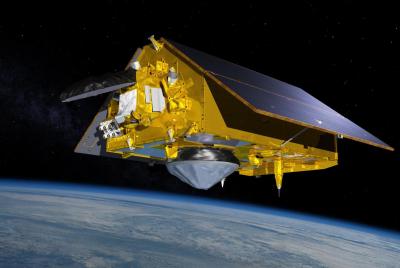Time Bombs Explosions Threaten Our Milky Way Galaxy
A new study defies Hollywood's most extravagant sci-fi film scenarios by suggesting thousands of "time bombs" could be scattered throughout our galaxy after a study shows that some old stars, known as white dwarfs might be held up by their rapid spins, and when they slow down, they explode as type Ia supernovae.
"We haven't found one of these 'time bomb' stars yet in the Milky Way, but this research suggests that we've been looking for the wrong signs. Our work points to a new way of searching for supernova precursors," said astrophysicist Rosanne Di Stefano of the Harvard-Smithsonian Centre for Astrophysics.
Di Stefano and her colleagues focused the study on stellar explosions of Type Ia supernova, which takes place when an old but compact star known as a white dwarf destabilizes.
A white dwarf is the remnant of a star that has collapsed and ceased nuclear fusion and can weigh up to 1.4 times as much as our Sun, a figure that has been called the Chandrasekhar mass after the scientists who calculated it first.
If the white dwarf's mass becomes heavier it can lead to a runaway nuclear reaction -an intense heat and pressure at the centre- which literally blew the star apart.
A white dwarf can exceed the Chandrasekhar mass and explode as a Type Ia supernova by either attracting enough matter from other stars or when two white dwarfs collide, but usually scientists are more lenient to the first scenario as the more likely explanation.
One problem deriving from this theory however is that we should be able to see certain signs such as being able to detect small amounts of hydrogen and helium gas near the explosion, but we have so far been able to spot such changes.
Di Stefano and her colleagues suggest that this can be explained by a spin-up/spin-down process that would produce a large delay, of up to one billion years between the time of accretion and the explosion.
The study explains that as a white dwarf gains mass, it also gains angular momentum, which speeds up its spin which can in turn help support the white dwarf, allowing it to cross the 1.4-solar-mass barrier and become a super-Chandrasekhar-mass star.
"Our work is new because we show that spin-up and spin-down of the white dwarf have important consequences. Astronomers therefore must take angular momentum of accreting white dwarfs seriously, even though it's very difficult science," explained Di Stefano.
Scientists estimate that there are three Type Ia supernovae every thousand years in our galaxy and calculations suggest that there should be dozens of pre-explosion systems within a few thousand light-years of Earth.
© Copyright IBTimes 2025. All rights reserved.





















